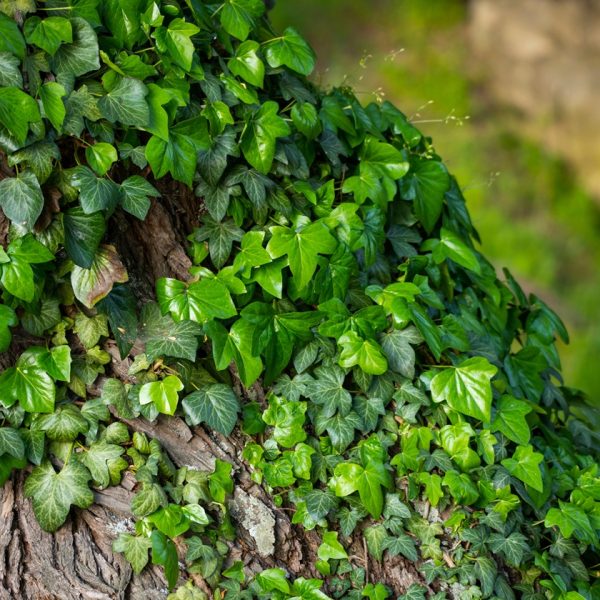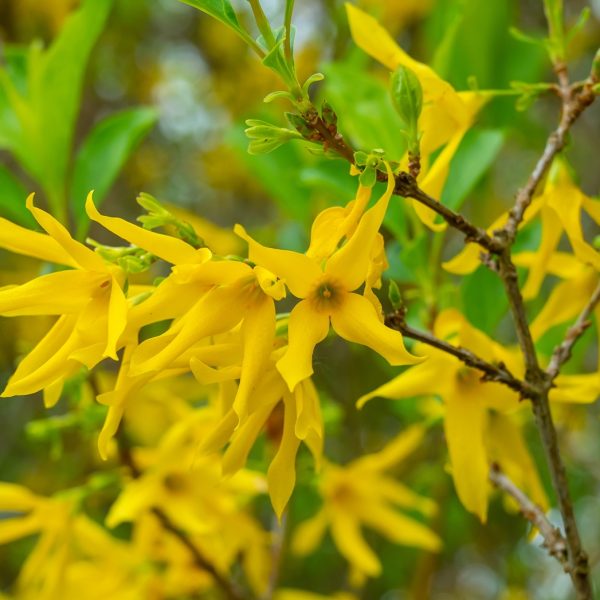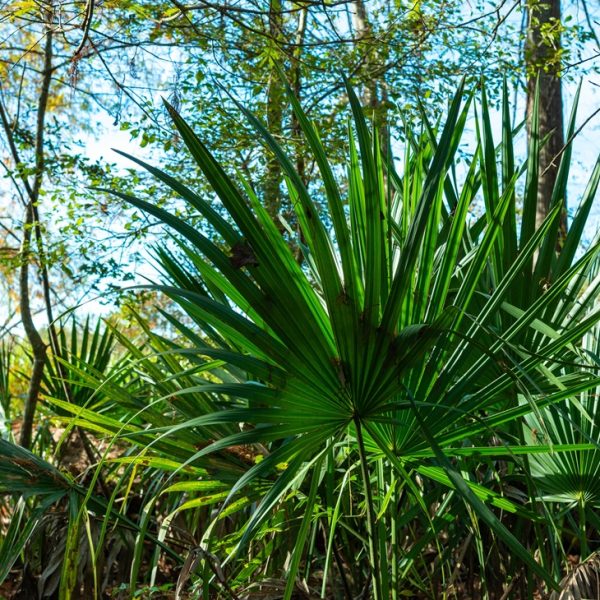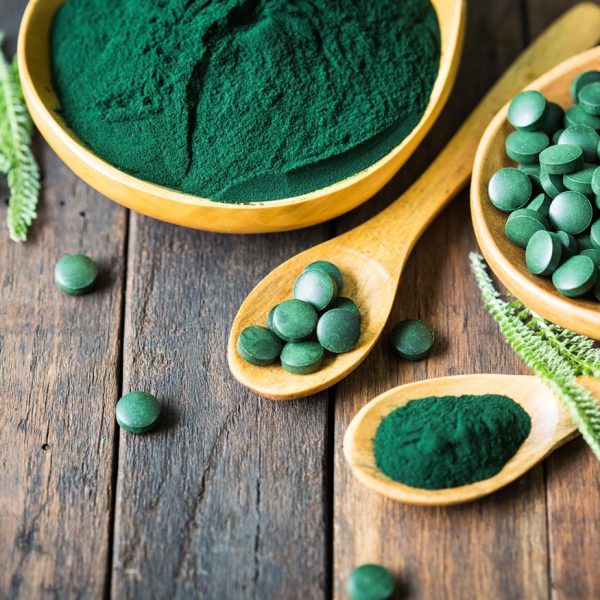-
How does it feel?
Its astringent qualities are due to the tannins it contains, which make periwinkle a useful remedy for drying excessive secretions and tightening and toning tissues.
-
What can I use it for?
Loss of mental focus, memory, dizziness, headache, tinnitus, vertigo, anxiety, stress, seasonal affective disorder, nervous tension, hypertension, restorative for anaemia and anorexia, peripheral arterial deficiency (as it tones and strengthens blood vessels), and cerebral arteriosclerosis. Therefore, it is also helpful for post-stroke victims.
-
Into the heart of lesser periwinkle
It is an energetically cooling plant useful to treat heating conditions and inflammation. It is the indole alkaloids present in lesser periwinkle that are of most interest. It is cited as a cerebral tonic by Matthew Wood (1), and with its vasodilatory and stimulating effects it improves blood flow to the brain and is recommended in cerebral atherosclerosis (plaquing of the arteries) and also said to reduce high blood pressure (2).
With an increasing prevalence of Alzheimer’s, the ability of V. minor to promote cerebral circulation in addition to its potential to ameliorate atherosclerosis makes the herb a good candidate for use for current neurodegenerative challenges.
-
Traditional uses

Lesser periwinkle blooming (Vinca minor) Periwinkle was understood for its astringent nature in as early as 40–90 AD by the Greek physician Dioscorides who noted in his De Materia Medica that “the leaves be drunk in wine to lessen excessive discharges of the bowels……and cure the pain of the matrix (womb)” (3).
Pliny (23–79 AD) recommended periwinkle for bleeding, diarrhoea, to heal wounds, and as an antidote to poisonous bites when taken with wine. It was even believed to prevent miscarriage when fastened around the thigh of a pregnant woman (McIntyre, 2022) (3).
Apuleius, 5th century, wrote in his herbarium: “This wort is of good advantage….against devil sickness and demoniacal possessions…against snakes and wilde beasts and against poisons….and for envy and terror….that thou may have grace. If thou hast the wort with thee…..prosperous and ever acceptable.” (4).
In the 13th century, Boke of Secrets it was said “Perwynke induceth love between man and wife if…used in their meales,” (4).
Herbalist John Gerard famously said of its virtues that if “the leaves stamped, and the juice given to drink in red wine, stoppeth the…… spitting of blood and it likewise stoppeth the inordinate course of the monthly sickness (heavy menses).” (5)
One of the most famous herbalists, Nicholas Culpeper, said it could be used it as an aphrodisiac when shared amongst lovers, and that it stopped the bleeding of the mouth and nose and was also good for the nightmares (4,6).
Periwinkle tea was thought of as a good remedy for scurvy, to relax sore throats and inflamed tonsils and to gargle with (4).
Bruised leaves inserted into nostrils were used to stop bleeding, and when used as an ointment with lard for its healing and anti-inflammatory properties, periwinkle was a useful remedy for skin complaints and for bleeding piles. The flowers of Vinca minor are thought of as gently purgative when made into a syrup, and considered a gentle laxative for children (4).
-
Traditional actions
Herbal actions describe therapeutic changes that occur in the body in response to taking a herb. These actions are used to express how a herb physiologically influences cells, tissues, organs or systems. Clinical observations are traditionally what have defined these actions: an increase in urine output, diuretic; improved wound healing, vulnerary; or a reduction in fever, antipyretic. These descriptors too have become a means to group herbs by their effects on the body — herbs with a nervine action have become the nervines, herbs with a bitter action are the bitters. Recognising herbs as members of these groups provides a preliminary familiarity with their mechanisms from which to then develop an understanding of their affinities and nuance and discern their clinical significance.
-
Traditional energetic actions
Herbal energetics are the descriptions Herbalists have given to plants, mushrooms, lichens, foods, and some minerals based on the direct experience of how they taste, feel, and work in the body. All traditional health systems use these principles to explain how the environment we live in and absorb, impacts our health. Find out more about traditional energetic actions in our article “An introduction to herbal energetics“.
Chinese energetics
Western energetics
Ayurvedic energetics
-
What practitioners say

Lesser periwinkle flowers (Vinca minor) V. minor has a particular affinity to the head and is viewed as a relaxing circulatory stimulant, which helps to clear restriction and promote the free flow of materials. Consequently, oxygen uptake is enhanced and cerebral performance is improved.
Useful in head issues like headaches, indicated for eye disease, ear problems like tinnitus, vertigo and labrynthitis and thought of as helpful in lowering high blood pressure and useful in Alzheimer’s. A synthetic version of an alkaloid from vinca called vinpocetine has been shown in studies to be usefeul for treatment for cognitive impairment and neurodegeneration (22).
Some herbalists substitute for Gingko and think of it as a peripheral vasodilator that improves oxygen and nutrient flow to the brain. Therefore it could be used for post-stroke victims to enhance the blood flow to that area. However, interestingly many modern clinical herbalists do not use vinca any more despite there being plenty of recorded use in earlier literature.
-
Research

Lesser periwinkle in a wood (Vinca minor) Almost no studies have been done on whole plant extracts of Vinca minor, whereas numerous studies have been done using the isolated compound, the indole alkaloid, vincamine.
Vincamine, a vinca alkaloid found in the leaves of Vinca minor is the strongest represented constituent and represents about 20–25% of all of the 40 or so alkaloids found so far. Specifically, vincamine is a monoterpene indole alkaloid with vasodilatory properties and studies indicate that it increases the regional cerebral blood flow. It is listed here as an antihypertensive, antineoplastic and peripheral vasodilator and vasodilator (5).
Vincamine has peripheral circulatory benefits and is used as a cerebral stimulant and vasodilator due to its ability to pass through the blood brain barrier and modulate brain circulation and neuronal homeostasis (6,7).
The monoterpene indole alkaloids from Vinca minor have identified a new structural scaffold for treatment of Alzheimer’s disease. There were a number of indole alkaloids that showed both the ability of blood-brain barrier penetration and remarkable hBuChE, and POP inhibition potency (both suggested markers in Alzheimers disease progression) (8).
In a study on the therapeutic efficacy of vincamine in dementia, Fischhof et al. showed in a double-blind placebo-controlled trial of 142 patients between the ages of 50–85 years who had either degenerative dementia of the Alzheimer’s type or multi-infarct dementia. After a 12-week time period the controlled group who were given 30mg vincamine twice daily performed significantly better in all four target variables compared to the placebo group (9).
There was a study done recently by Hasa that showed a sevenfold improvement in oral bioavailability of vincamine when administered to rats as part of a whole plant compared to the pure chemical compound (2013) (10), something we know as the ‘entourage effect’, which is a major premise of herbalism as we use phytochemically diverse extracts.
-
Did you know?

Lesser periwinkle plants (Vinca minor) There are actually two very similar plants with different uses: lesser periwinkle and greater periwinkle. Unlike lesser periwinkle, described above, greater periwinkle (larger leaves) is now known to have an affinity for the reproductive and lower digestive systems, due to its strong astringency and blood staunching actions. It is especially useful to stem heavy menstrual bleeding or to reduce bleeding ulcers in the digestive system.
Lesser periwinkle was known as The Sorcerer’s Violet or Devils Eye, and it was considered a favourite flower of the“wise folk (witches) for making charms and love potions. It was even said to be able to exorcise evil spirits (11). It was also said that even staring into the beautiful flower alone could bring back memories.
Periwinkle was considered the Female Patron Herb of Wiccans she was guided by the planet Venus (13).
Additional information
-
Botanical description
It is an evergreen ground hugging shrub with rooting stems, shiny elliptical leaves and five-petalled elliptical blue-violet flowers (20).
-
Common names
- Blue periwinkle
- Small leaf periwinkle
-
Safety
Alkaloids can have profound physiological actions in humans, especially on the nervous system —e.g. caffeine, morphine, lobeline, berberine, ephedrine (14). So, caution is always prescribed with alkaloids due to their potential strength and toxicity. Therefore, it is suggested that you use caution as high doses may adversely affect the nervous system and kidneys. Always avoid use when pregnant, breastfeeding or with hypotension (15).
-
Interactions
High doses may decrease absorption of digoxin. Due to the hypotensive activity of the constituent vincamine, periwinkle may have an additive effect with antihypertensive drugs, so blood pressure should be closely monitored if using concomitantly. Theoretically, due to the antihypertensive activity of the constituent vincamine, taking periwinkle may increase the effects of antihypertensive drugs (16).
-
Contraindications
Vinca minor is contraindicated in brain tumours (17) as it may cause intracranial bleeding and pressure (2,17).
Due to the astringency of V. minor, it is contraindicated in constipation. As it also can lower blood pressure, its use should be avoided in individuals with low blood press and prior to surgery (as it may interfere with blood pressure control) (18).
-
Preparations
In the modern herbalist pharmacy, Vinca minor is mainly used as an alcoholic tincture. You can also use in a lotion for haemorrhoids. Due to its astringency, you can chew the leaves of Vinca minor and V. major in the case of toothache and bleeding gums (15). Historically, the leaves were steeped in wine and then drunk to staunch bleeding menses, heal wounds and reduce diarrhoea.
-
Dosage
Alcoholic tincture: Don’t use as a simple (just the one herb), always use as part of a tincture formulae up to a maximum of 25% in any formulae due to potential toxicity.
Then take 5ml three times daily. Vinca minor alcoholic tincture is usually a 1:4 25%.
-
Plant parts used
In herbal medicine, you can use the roots, leaves and flowers of Vinca minor. The flowers are a gentle laxative when fresh and the roots are antispasmodic and used to lower blood pressure (19).
-
Constituents
- Tannins
- Cardiac glycosides
- Contains around 40 indole alkaloids, including vincine, isomajdine, majdine, reseroinine, serpentine, of which vincamine is thought of as the most active

-
Habitat
Thought to be endemic to Spain initially it then over time found its way to our more northernly shores. Its invasive nature gave it an advantage on disturbed ground and, hence, it was often found in graveyards which is thought to have bound its association with death (21). V. minor has a ground trailing habit (4) . A bonus is that members of this genus are rarely troubled by browsing deer or rabbits. It spreads rapidly by long trailing and rooting stems once it is established and will swamp out smaller plants (13). Given the chance, it will climb up though other plants that it uses for support as seen here situated on the roadside.
-
Sustainability
 Habitat loss and over-harvesting from the wild are two of the biggest threats faced by medicinal plant species. There are an increasing number of well-known herbal medicines at risk of extinction. We must therefore ensure that we source our medicines with sustainability in mind.
Habitat loss and over-harvesting from the wild are two of the biggest threats faced by medicinal plant species. There are an increasing number of well-known herbal medicines at risk of extinction. We must therefore ensure that we source our medicines with sustainability in mind. The herb supplement industry is growing at a rapid rate and until recent years a vast majority of medicinal plant produce in global trade was of unknown origin. There are some very real and urgent issues surrounding sustainability in the herb industry. These include environmental factors that affect the medicinal viability of herbs, the safety of the habitats that they are taken from, as well as the welfare of workers in the trade.
The botanical supply chain efforts for improved visibility (transparency and traceability) into verifiably sustainable production sites around the world is now certificated through the emergence of credible international voluntary sustainability standards (VSS).
Read our article on Herbal quality and safety: What to know before you buy and Sustainable sourcing of herbs to learn more about what to look for and questions to ask suppliers about sustainability.
-
Quality control
Herbal Medicines are often extremely safe to take, however it is important to buy herbal medicines from a reputed supplier. Sometimes herbs bought from unreputable sources are contaminated, adulterated or substituted with incorrect plant matter.
Some important markers for quality to look for would be to look for certified organic labelling, ensuring that the correct scientific/botanical name is used and that suppliers can provide information about the source of ingredients used in the product.
A supplier should be able to tell you where the herbs have come from. There is more space for contamination and adulteration when the supply chain is unknown.
-
How to grow
Plant established seedlings or small pot plants into their permanent positions in late spring or early summer, after the last expected frosts. Water regularly. A very easily grown plant, it succeeds in almost any soil but prefers those that are on the richer side. It grows well in heavy clay soils. Plants are very shade tolerant but they do not flower so well in deep shade. It can grow well under deciduous trees, and in such a position it can succeed in dry soils. Established plants are drought tolerant (13).
-
Recipe
Only old anecdotal recipes like using the flowers in a syrup as a gentle laxative. See our article on how to make herbal syrups to learn how to make this.
-
References
- McIntyre, A, 2019. The Complete Herbal Tutor. Aeon Books. London, UK.
- Wood, M. 2008. The Earthwise Herbal Volume 1: A complete guide to old world medicinal plants. North Atlantic Books. Berkeley, California, U.S.A.
- McIntyre, A, 2002. The Complete Floral Healer. Sterling Publishing. New York, U.S.A.
- Culpepper, N. 1814. The Complete Herbal. Accessed: https://archive.org/details/ cu31924001353279/page/n119/mode/2up Publisher: Richard Evans, Spitalfields, London.
- Gerard, J. 1597. The General History if Plants. Available at: https://www.exclassics.com/herbal/ herbalv3.pdf (Accessed: 11.07.2022).
- Grieve, M, 1931. A Modern Herbal Vol II. Stone Basin Books, USA.
Grieve, M. 1931. A Modern Herbal. Available at: https://www.botanical.com/botanical/mgmh/p/ - Drugbank Online. 2022. Vincamine. Available at: https://go.drugbank.com/drugs/DB13374 (Accessed 18.01.2022).
- Hong,Y., & Yu-Hong, S. 2011. Vincamine-producing endophytic fungus isolated from Vinca minor. Available at: https://www.sciencedirect.com/science/article/abs/pii/S0944711311000067 (Accessed: 04.04.2022).
- Vrabek, R. et al. 2021. Monoterpene indole alkaloids from Vinca minor L. (Apocynaceae): Identification of new structural scaffold for treatment of Alzheimer’s disease. Available at: https:// www.sciencedirect.com/science/article/pii/S0031942221003666 (Accessed: 05.04.2022).
- P. et al. 1996. Therapeutic Efficacy of Vincamine in Dementia. Available at: https:// www.karger.com/Article/Abstract/119288 (Accessed 18.01.2022).
- Hasa, D. et al. 2013. Rationale of using Vinca minor Linne dry extract phytocomplex as a vincamine’s oral bioavailability enhancer. Available at: https://pubmed.ncbi.nlm.nih.gov/23238273/ (Accessed: 11.07.2022).
- White Rabbit Institute of Healing. 2022. Periwinkle. Available at: https:// www.whiterabbitinstituteofhealing.com/herbs/periwinkle/ (Accessed: 05.04.2022).
- Witches Garden. Available at: http://www.earthwitchery.com/periwinkle.html (Accessed: 05.04.22)
- Pengelly, A. 2004. The Constituents of Medicinal Plants. CABI, Boston, USA.
- McIntyre, A. Boudin, M. 2012. Dispensing with Tradition. McIntyre & Boudin, Cheltenham, UK.
- Vinca minor Interactions. NatMed Pro – Login. 2024. Accessed May 8, 2024. https://naturalmedicines.therapeuticresearch.com/tools/interaction-checker.aspx#.
- Holmes, P. 2007. The Energetics of Western Medicine. Fourth Edition. Beacon Press, Boston, USA.
- Vinca minor Monograph. NatMed Pro – Login. Accessed May 8, 2024. https://naturalmedicines.therapeuticresearch.com/databases/food,-herbs-supplements/professional.aspx?productid=476.
- McIntyre, A. 2022. Healing With Flowers. Aeon Books, London, UK.
- Chevallier, A. 2016. Encyclopaedia of Herbal Medicine. Dorling Kindersley, London, UK.
- Bogan, Claire, 2020. Periwinkle. Available at: http://www.feritradition.org/grimoire/garden/ periwinkle.html (Accessed: 17.01.2022).
- Szatmári S, Whitehouse P. Vinpocetine for cognitive impairment and dementia. Cochrane Library. 2003;2010(1). doi:10.1002/14651858.cd003119






































